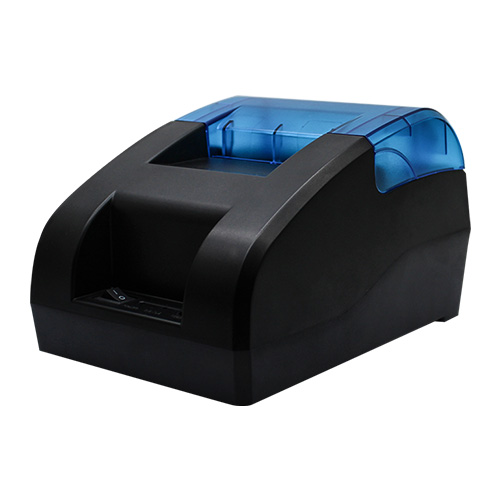Time:2025.07.02Browse:1

The print speed of thermal printers is a critical performance indicator that varies significantly based on their design, application scenarios, and technical specifications. Unlike inkjet or laser printers, thermal printers operate by heating a thermal paper coated with heat-sensitive chemicals, eliminating the need for ink cartridges or toners. This mechanism allows for relatively fast printing, but the actual speed depends on multiple factors.
For desktop thermal printers commonly used in retail, logistics, and point-of-sale (POS) systems, print speeds typically range from 50 to 300 millimeters per second (mm/s). Entry-level models designed for basic receipt printing may achieve speeds of 50–100 mm/s, suitable for low-volume transactions. Mid-range models, such as those used in small warehouses for label printing, can reach 150–200 mm/s, balancing speed and precision. High-end industrial thermal printers, optimized for large-scale barcode or label production, often exceed 200 mm/s and may even reach 300 mm/s, leveraging advanced heating elements and robust mechanical designs to handle continuous high-volume workloads.
The print speed is also influenced by the complexity of the content. Printing simple text or standard barcodes requires less heat and processing time, allowing the printer to operate at maximum speed. In contrast, high-resolution graphics, detailed images, or dense 2D barcodes (e.g., QR codes) demand more precise heating and longer dwell times per pixel, reducing the effective speed. For example, a thermal printer might print a standard receipt at 200 mm/s but slow to 100 mm/s when rendering a detailed logo or high-density data matrix code.
Additionally, the type of thermal paper affects speed. Thicker or higher-quality thermal paper may require more heat to produce legible prints, slightly reducing the printing pace. Conversely, thin, low-grade paper might allow faster printing but risk smudging or poor image retention. Some thermal printers feature adjustable speed settings, enabling users to prioritize speed (for bulk printing) or quality (for detailed labels) based on their needs.
In mobile thermal printers (e.g., portable models used by delivery drivers), print speeds are generally lower, ranging from 40 to 150 mm/s, due to compact hardware limitations and power efficiency considerations. These devices often use battery power and prioritize portability over raw speed, making them suitable for on-the-go tasks like printing delivery receipts or ticket stubs.
Read recommendations: